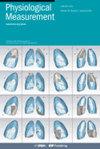Multi-branch myocardial infarction detection and localization framework based on multi-instance learning and domain knowledge.
IF 2.3
4区 医学
Q3 BIOPHYSICS
引用次数: 0
Abstract
OBJECTIVE Myocardial infarction (MI) is a serious cardiovascular disease that can cause irreversible damage to the heart, making early identification and treatment crucial. However, automatic MI detection and localization from an electrocardiogram (ECG) remain challenging. In this study, we propose two models, MFB-SENET and MFB-DMIL, for MI detection and localization, respectively. APPROACH The MFB-SENET model is designed to detect MI, while the MFB-DMIL model is designed to localize MI. The MI localization model employs a specialized attention mechanism to integrate multi-instance learning with domain knowledge. This approach incorporates handcrafted features and introduces a new loss function called lead-loss, to improve MI localization. Grad-CAM is employed to visualize the decision-making process. Main Results: The proposed method was evaluated on the PTB and PTB-XL databases. Under the inter-patient scheme, the accuracy of MI detection and localization on the PTB database reached 93.88% and 67.17%, respectively. The accuracy of MI detection and localization on the PTB-XL database were 94.89% and 85.83%, respectively. SIGNIFICANCE Our method achieved comparable or better performance than other state-of-the-art algorithms. The proposed method combined deep learning and medical domain knowledge, demonstrates effectiveness and reliability, holding promise as an efficient MI diagnostic tool to assist physicians in formulating accurate diagnoses. .基于多实例学习和领域知识的多支心肌梗塞检测和定位框架
目的 心肌梗塞(MI)是一种严重的心血管疾病,可对心脏造成不可逆的损伤,因此早期识别和治疗至关重要。然而,从心电图(ECG)中自动检测和定位心肌梗死仍然具有挑战性。在本研究中,我们提出了两种分别用于 MI 检测和定位的模型,即 MFB-SENET 和 MFB-DMIL。MI 定位模型采用专门的注意力机制,将多实例学习与领域知识相结合。这种方法结合了手工制作的特征,并引入了一种新的损失函数--lead-loss,以改进 MI 定位。Grad-CAM 用于可视化决策过程。主要结果:在 PTB 和 PTB-XL 数据库上对所提出的方法进行了评估。在患者间方案下,PTB 数据库中 MI 检测和定位的准确率分别达到 93.88% 和 67.17%。在 PTB-XL 数据库中,MI 检测和定位的准确率分别为 94.89% 和 85.83%。所提出的方法结合了深度学习和医学领域知识,具有有效性和可靠性,有望成为一种高效的心肌梗死诊断工具,帮助医生做出准确诊断。.
本文章由计算机程序翻译,如有差异,请以英文原文为准。
求助全文
约1分钟内获得全文
求助全文
来源期刊

Physiological measurement
生物-工程:生物医学
CiteScore
5.50
自引率
9.40%
发文量
124
审稿时长
3 months
期刊介绍:
Physiological Measurement publishes papers about the quantitative assessment and visualization of physiological function in clinical research and practice, with an emphasis on the development of new methods of measurement and their validation.
Papers are published on topics including:
applied physiology in illness and health
electrical bioimpedance, optical and acoustic measurement techniques
advanced methods of time series and other data analysis
biomedical and clinical engineering
in-patient and ambulatory monitoring
point-of-care technologies
novel clinical measurements of cardiovascular, neurological, and musculoskeletal systems.
measurements in molecular, cellular and organ physiology and electrophysiology
physiological modeling and simulation
novel biomedical sensors, instruments, devices and systems
measurement standards and guidelines.
 求助内容:
求助内容: 应助结果提醒方式:
应助结果提醒方式:


